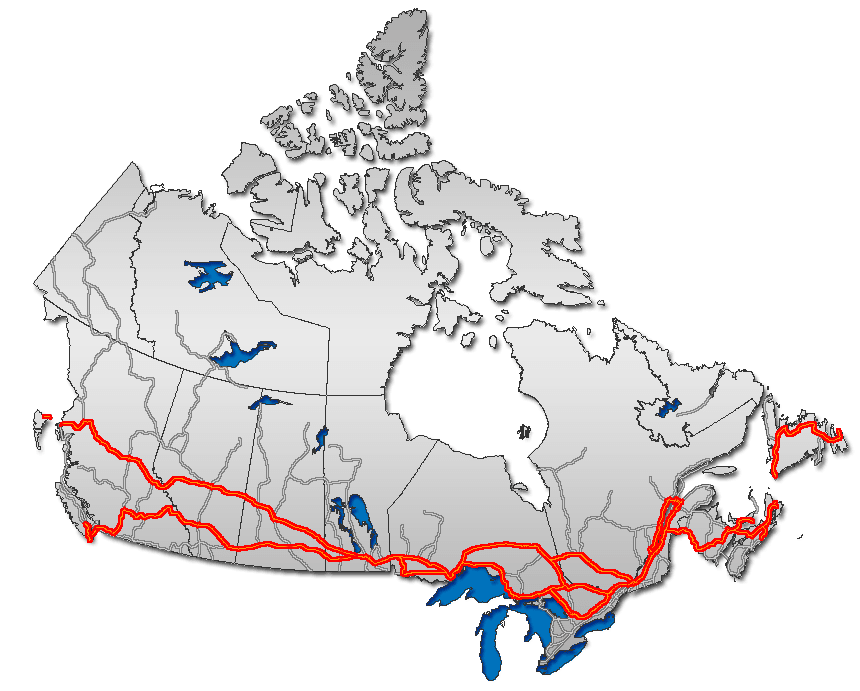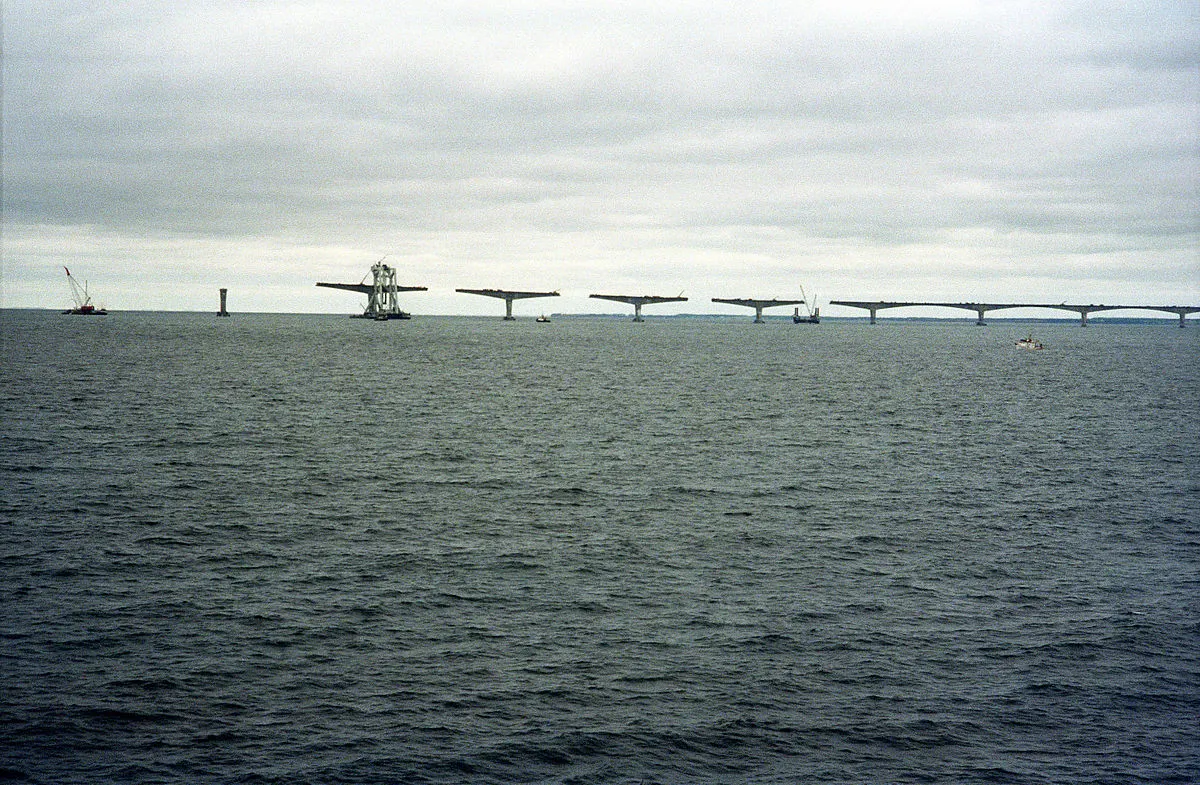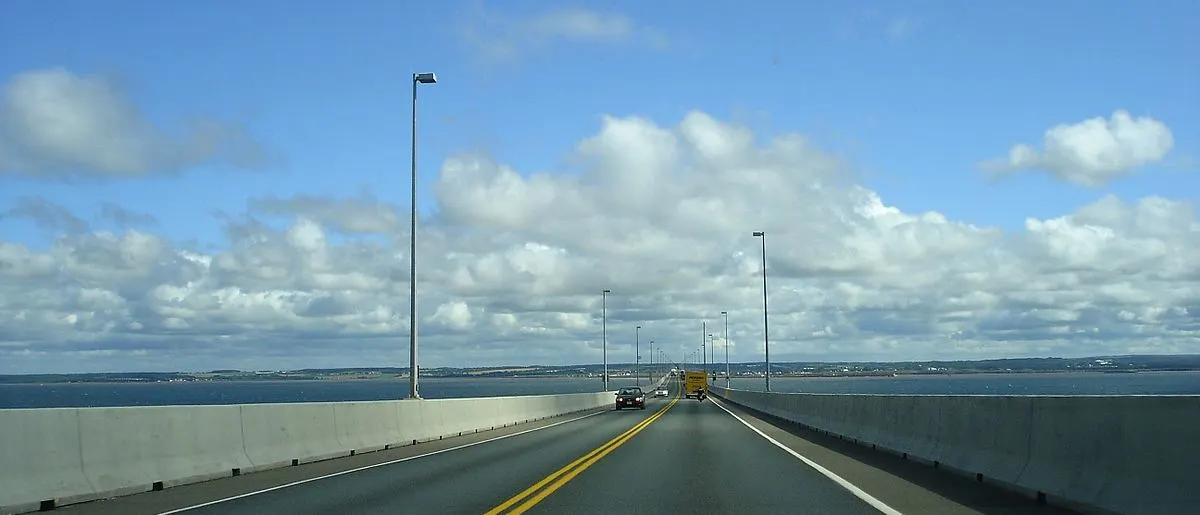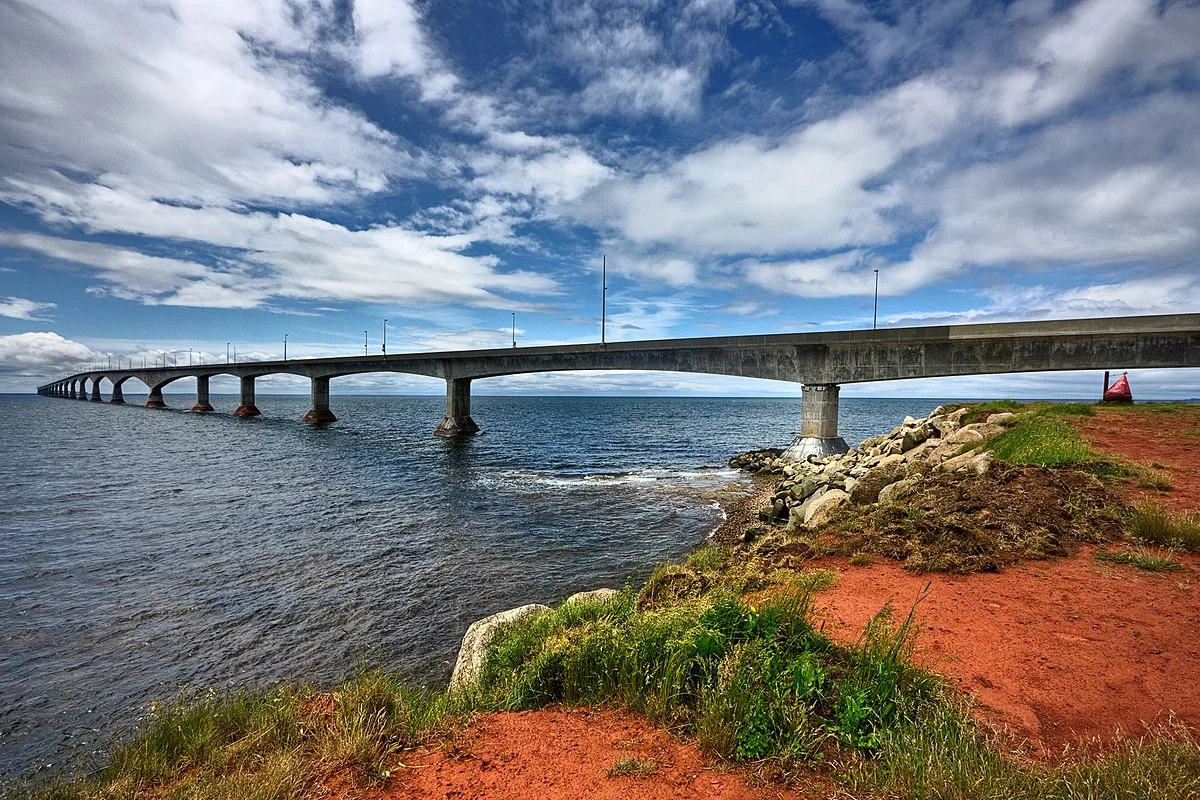One of the most fascinating bridges in the world can be found in the east of Canada.
In this post, you’ll discover the ultimate list of interesting Confederation Bridge facts, a bridge in Canada that holds some remarkable records!
1. The bridge connects two provinces in the east of Canada
The Confederation Bridge is a box and girder bridge that crosses the Abegweit Passage. This is the narrowest part of the Northumberland Strait, the utmost southern part of the Gulf of St. Lawrence in the east of Canada.
The bridge connects the province of Prince Edward Island, an island in the southern part of the Gulf of St. Lawrence, with the province New Brunswick, which is located on Canada’s mainland.

2. It’s part of one of the longest routes in the world
The bridge carries the Trans-Canada Highway, a system of federal highways that cross through all 10 provinces of the country. These routes run all the way from the Pacific to the Atlantic Ocean.
The main route spans a total of 7,821 kilometers (4,860 miles) which means it’s one of the longest routes of its kind in the world. Only the Pan-American Highway in the United States, Highway 1 in Australia, and Trans-Siberian Highway in Russia are longer.

3. The Confederation Bridge holds some amazing records
With a total length of 12.9 kilometers (8 miles), the Confederation Bridge is the longest bridge in Canada. It has a total of 62 piers of which 44 piers are considered the main piers.
These piers stand 250 meters (820 feet) apart with the deck reaching a height of 40 meters (131 feet) above water. The total width of the bridge is just 11 meters (36 feet).
One of the most remarkable Confederation Bridge facts is that it’s also the longest bridge in the world which spans ice-covered water!

4. The original plan for a bridge dates back to the 1870s

Back in the 1870s, the railway system in the provinces of Prince Edward Island and New Brunswick was being developed. This was the first time that the idea of building a link across the Abegweit Passage came up, but it wasn’t materialized.
The idea for a so-called “Fixed Link” wasn’t for a bridge but for a tunnel. George Howlan was the man who fought for the idea but it lost traction after his death in 1901.
Back in the 1950s, another project was completed called the Canso Causeway in Nova Scotia, as well as the mega-project the St. Lawrence Seaway. The idea was again shelved in the late 1960s because an improved ferry industry was recommended, even though approach roads and railway lines had already been constructed.
5. A referendum in 1988 decided in favor of building the bridge
By the 1980s, the cost to operate the ferry service had risen so much that a new proposal to build a bridge was welcomed by the Canadian Government. It did face a lot of opposition though.
Two groups were created to promote their ideas regarding the issue. One group was called the anti-link group “Friends of the Island,” which opposed the bridge’s construction. The other pro-link group was called the “Islanders for a Better Tomorrow,” people who saw the benefits of a bridge as opposed to improved ferry services.
A referendum, or “plebiscite,” was held on January 18, 1988, and 59.4% of the votes were in favor of the bridge being constructed!

6. Construction of the Confederation Bridge didn’t start until late 1993
After the referendum was finished and it became clear that the anti-bridge group lost, the litigation started which further delayed the start of the construction tremendously.
These legal challenges resulted in a thorough environmental impact assessment being conducted. It took multiple years to eventually get the green light and a company named “Strait Crossing Development Inc.” was founded which was in charge of the project.
This company was formed on December 2, 1992, and the construction of the Confederation Bridge didn’t start until the fall of 1993.
The construction cost was about CAD $1.3 billion and 5,000 workers completed the project on May 31, 1997!
7. The name of the bridge is pretty common on Prince Edward Island
Before the bridge was completed, the name given to the bridge by the inhabitants of Prince Edward Island was the “Fixed Link.” It wasn’t until shortly before the construction ended that the bridge was given its official name, the “Confederation Bridge” or “Pont de la Confédération.”
One of the most interesting Confederation Bridge facts is that this wasn’t the most popular name though, because the word confederation is used extensively on the island already. Some of these uses include:
- A Northumberland Ferries Limited vessel – M/V Confederation.
- A performing arts centre and art gallery – Confederation Centre of the Arts.
- A shopping centre – Confederation Court Mall.
- The province-wide rails to trails system – Confederation Trail.
- In tourism promotions – the “Birthplace of Confederation.”
The most popular name, which wasn’t chosen, was to name the bridge the “Abegweit Crossing,” in reference to the “Abegweit Passage.”

8. The bridge will eventually be owned by the Government of Canada
Because the bridge cost a total of $1.3 billion Canadian dollars, finding the funding to support the project wasn’t easy. The Canadian Government eventually agreed to pay the company in charge of the bridge $44 million a year for a period of 33 years, which replaced the government’s payments to operate the ferry service.
This arrangement will continue until the year 2032, which is when the ownership of the bridge will be transferred to the government who will manage and operate the bridge from then on.
This means that the arrangement works pretty much as a regular mortgage and most of the money is used to pay for the construction of the bridge with a slight yield for the company operating it.
9. It only has 2 lanes and can’t be crossed by pedestrians or bicycles
The bridge also makes money because it’s a toll bridge. No money is being made from pedestrians or bicycles though because only vehicles can cross the bridge.
Because it’s only 11 meters wide (36 feet), the bridge only carries 2 lanes of traffic as well.

10. Is the bridge beneficial for tourism on the island?
Shortly after the bridge was inaugurated, an event in which 75,000 pedestrians crossed the bridge on May 31, 1997, the bridge was booming. Tourism to the province of Prince Edward Island skyrocketed with over 1.2 million visitors the year after opening.
This dropped significantly the following years, though, because now, on average, about 900,000 tourists visit the island every year.

